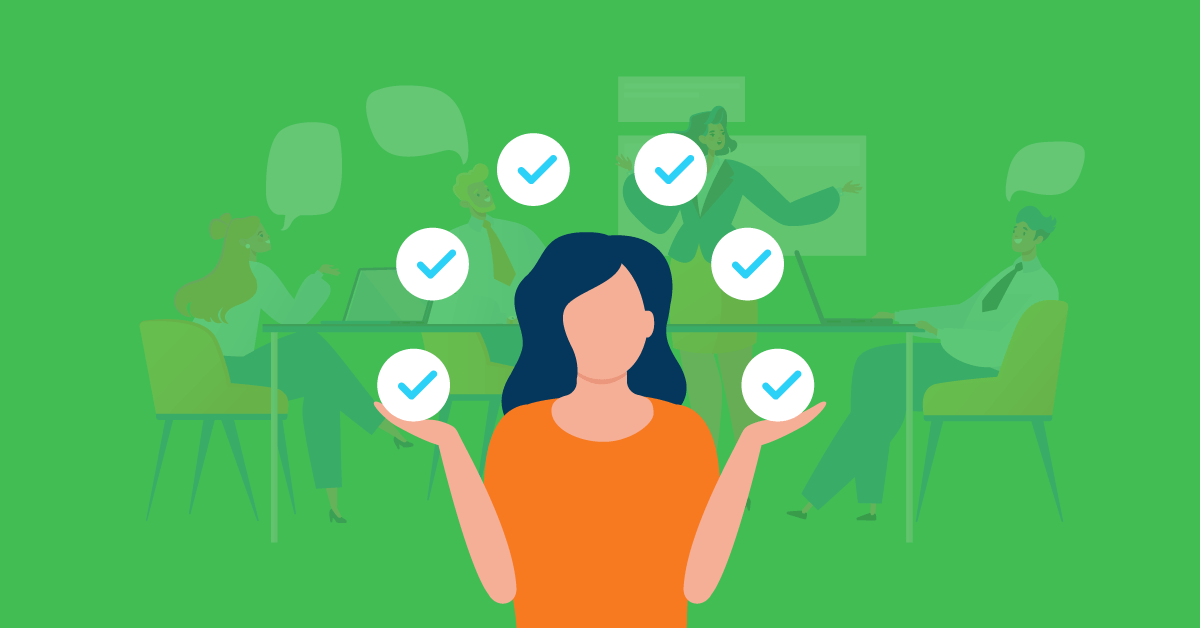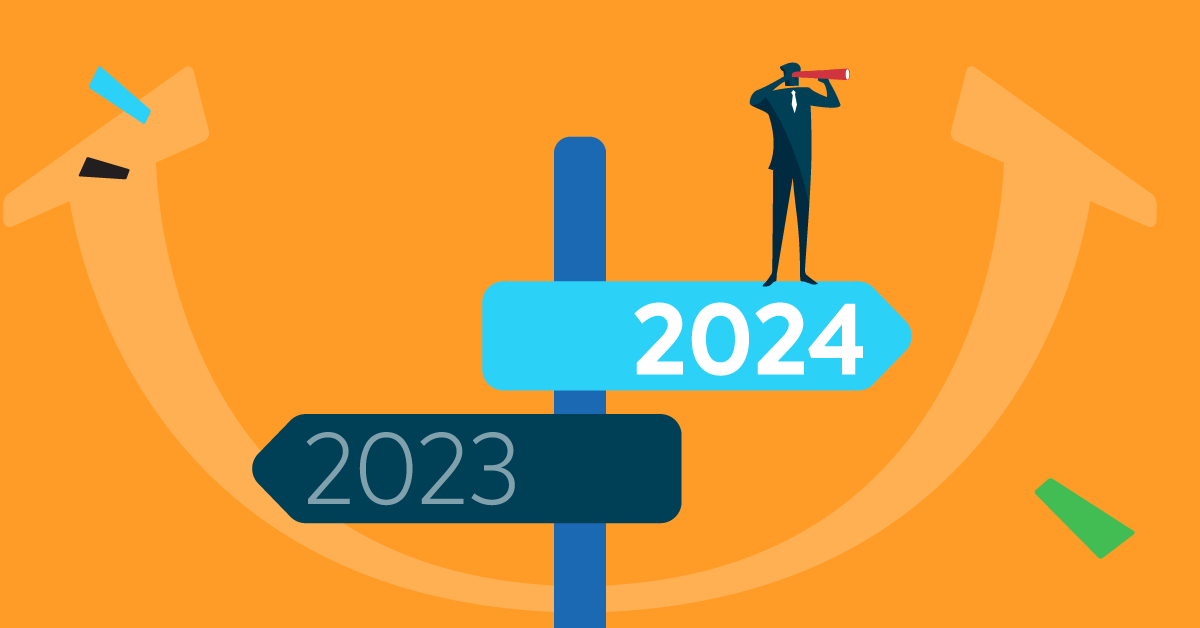“Knowing is not enough; we must apply. Willing is not enough; we must do.”
Johann Wolfgang von Goethe
As a learning and development professional, you know your job isn’t as simple as just getting the right information in front of the right people. Or even getting people to understand the information once they’ve got it.
When it comes to employee training, there’s a big difference between knowledge and skill. Even the best of courses can fall short if you fail to help people move from knowing the right thing to do to actually doing it.
Your goal with any training is to impact learners’ behavior. So you want to ensure your strategy helps bridge the gap between knowing and doing.
What’s the catch with knowledge vs. skill? We’ll help you get started with tips for moving learners from knowing to doing. So, let’s begin by defining the difference between knowledge and skill.
Knowledge vs. skill: Which is more important?
Knowledge is theoretical. It’s an intellectual understanding of information, knowing the right answers.
Skills are practical. They are the actions people take to put their knowledge into practice.
This is the main difference between knowledge and skill, but let’s delve into it a bit more.
In terms of workplace learning, all training should impart knowledge. You want learners to walk away from a course knowing the concepts you set out to teach them. You also want it to go a step further. Your training strategy should be tied to specific company goals, so you should be looking for specific, measurable results after course completion.
Why you need to focus your training on both
When you treat training as just a box to tick, you risk focusing only on knowledge transfer, and that can hurt your overall company goals. This is why understanding knowledge vs. skill is important.
For instance, say your company rolls out compliance training on cybersecurity. You put everyone through the training and ensure each employee passes the multiple choice test at the end of the course. Now the company’s certified, and you can check that goal off.
But have you achieved the more important goal of the training: making your company’s data and systems more secure? Just because employees recognize the skills doesn’t mean they’ll actually be willing or able to use them back on the job. And if they don’t, you’re still at risk.
If you want to reach your KPIs, you need to ensure people can move from knowing to doing. This applies to any kind of learning.
If you want to improve your customer satisfaction scores, you may train your reps on the best way to handle tough customer complaints. But recognizing the signs of a heated situation and understanding the general steps needed to de-escalate it isn’t the same as knowing what exactly to say when faced with an angry customer.
If you want real results, you’ve got to help employees see how to take their theoretical understanding (knowledge) and turn it into the practical application (skill). Here’s how.

How to help learners move from knowing to doing
Employees are ultimately responsible for their own development and applying new knowledge, but you can make it easier for them. Your company will benefit from your training strategy more if you look past the goal of imparting knowledge and aim for boosting application as well. Here are six ways to help your employees move from knowing to doing when it comes to new skills and shed some light between knowledge vs. skill.
1. Give it time
The first thing to know about behavior change is that it will require patience. Changing habits takes time. And people with busy work schedules are more likely to stick to what they know well. So build the time into your training strategy.
Make sure learning and development is a priority. Give people time to go through training and bring their skills up to speed.
You should also introduce new skills and methods gradually. Rolling out multiple courses aimed at different behavior change can get confusing and overwhelming. So start with one and make sure people have time to get the theory and the practice down before you introduce another.
2. Show learners what the skills look like
Help employees get a grasp on new skills on the job by letting them see how they apply in their specific role.
In the case of customer service training, you can teach people the general steps to go through in de-escalating customer concerns. But then show them specific examples of what it looks like in their work environment.
Try things like:
- Creating video scenarios where people act out an actual conversation.
- Including written sample conversations in the material.
- Sharing case studies of customer service success stories from your company so they can see how a colleague actually handled a situation.
Seeing specific applications and scripts will help people visualize how they’ll use the skills themselves and make them better prepared to do so successfully.
3. Incorporate practice
Give people hands-on experience with the skills in the training course. Set up scenarios that they would actually face at work and have them practice responding with the skills. This could look like quizzes within the training or breakout sessions to role-play scenarios with fellow learners.
Training provides a safe place for people to try out the skills and fail or receive corrections. As they feel safe to experiment, they’ll get comfortable stepping into the skills when a real-life situation comes up back on the job.
Practice helps employees build “muscle memory,” so using the skills comes more naturally.
Looking for an eLearning platform to boost learner skills?
Create quizzes and role-play scenarios in no time with TalentLMS.
The training platform that users consistently rank #1.
4. Spend time on application
Your instinct may often be to spend most of the time in training focusing on imparting knowledge. You have limited time with learners, so you want to give them all the information you can. But it can be helpful to give a little more time to application.
Instead of just describing the skills or procedures you’re training, spend time discussing the ins and outs of how they’re done. As noted above, give specific examples of what the skills look like. Let learners have time to collaborate and share their own experiences, so they learn from one another.
For instance, If you’re giving people skills to de-escalate an upset customer, share a script for what each step sounds like. Have employees share stories of when they’ve successfully (or unsuccessfully) handled a specific customer complaint.
5. Divide the learning up for easier consumption
Information overload can be overwhelming. When you divide the learning up into short, single-topic lessons (microlearning), you’ll make it easier for people to remember the skills.
Microlearning is accessible, usually by mobile device. It’s also quick, so people can fit it into their schedules when they have a few minutes to really focus. And when people learn the skills one at a time, they can focus on getting comfortable with each back on the job before they move on and learn another.
Short, quick bursts of learning help you take time to keep people from getting overwhelmed with information too quickly. This is the point where knowledge vs. skill needs to be addressed. By leveraging bite-sized training you allow people to focus on transferring what they learn to practical skills.
Meet TalentLibrary™
A growing collection of short, ready-made courses that cover the skills
your teams need for success at work![]()

6. Follow up back at work
Finally, it’s crucial to remember that training support doesn’t end in the classroom (or in your learning platform). If you want new skills to become part of employees’ everyday practice, build in support.
Send periodic reminder emails about skills. Hold refresher sessions where employees can discuss how things are going with leaders and colleagues. Hearing how others apply the skills at work will help them see more opportunities for their own efforts.
Continue supporting their new skills as they return to work to help them continue growing them.
Moving from knowledge to skill is a long-term goal
After examining the difference between knowledge and skill, we can support that getting new knowledge may be a quick process, but learning and applying new skills doesn’t happen overnight. That’s why it’s crucial to adopt a continuous learning mindset. When you care about reaching company goals and supporting employee well-being, you need to be prepared to invest in long-term behavior change results.
That means building a training strategy that supports skill transfer. Then, stick with your strategy to move employees past understanding and on to real, lasting behavior change.
| Tags: Employee Training,Learner Engagement,learning and development



